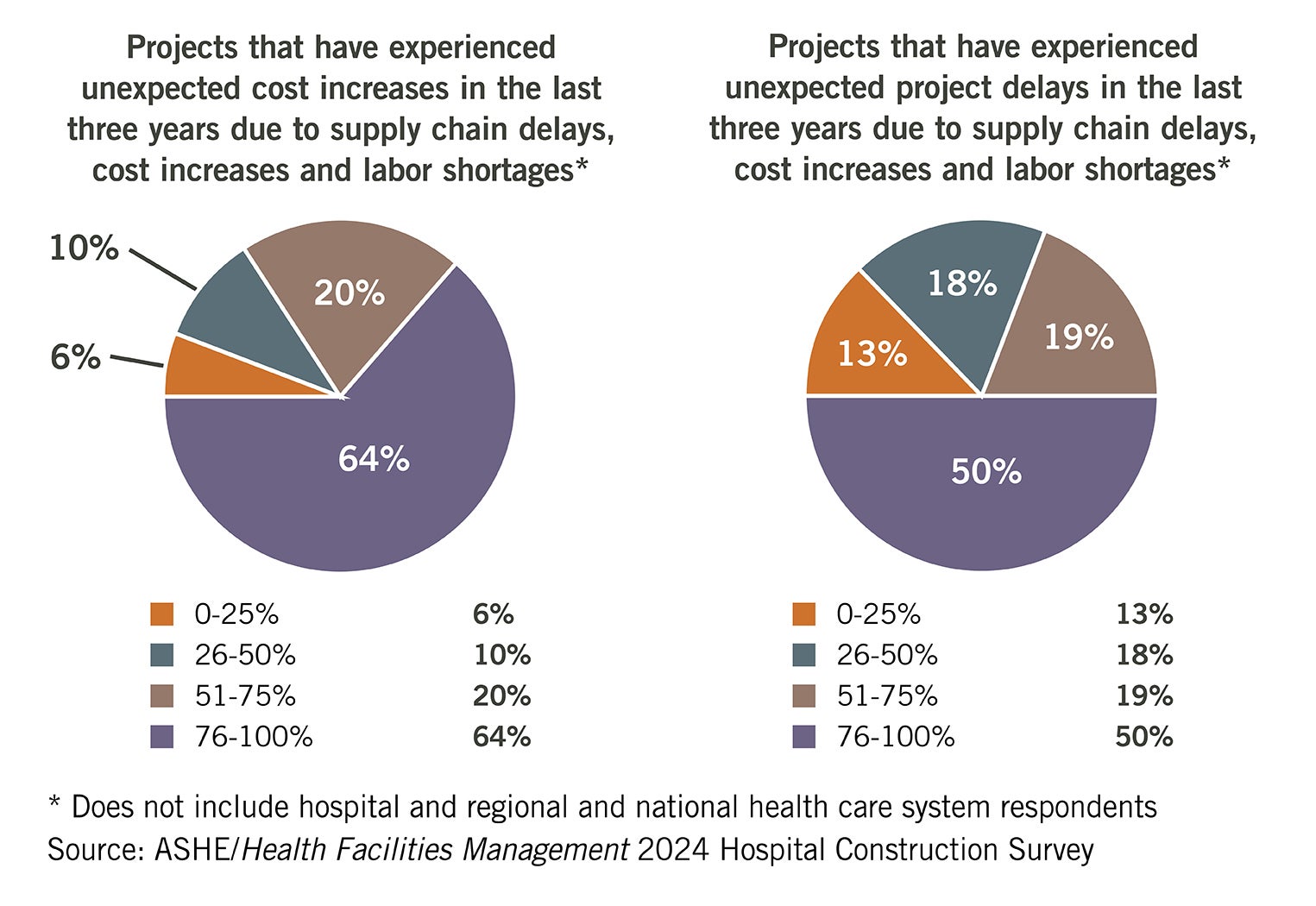AEC professionals weigh in on health care building trends

Click the chart above and use the arrows to view data from the ASHE/HFM 2024 Hospital Construction Survey
Third-party architecture, engineering and construction (AEC) professionals serving the health care field are also feeling the sting of rampant cost increases and project delays, according to the 2024 Hospital Construction Survey conducted annually by the American Society for Health Care Engineering’s Health Facilities Management magazine. Over 100 representatives from the AEC field were asked the percentage of health care projects they’ve worked on within the last three years that have experienced unexpected cost increases and project delays due to inflation, labor shortages and supply chain issues. Most experienced cost increases (64%) and project delays (50%) on 76% to 100% of all projects — with supply cost increases and supply chain shortages named the top causes of these issues.
“Projects were delayed with the belief the market was going to come back down, and inflation only continued,” one respondent says. “Costs have risen, and with labor shortages, contractors are forced to include premium time costs for workers to complete the work after normal working hours or weekends.”
AEC respondents say on average they have seen project costs increase 26% over the last three years. “Various materials and equipment have significantly escalated in cost,” one respondent says. “Availability has caused the need to purchase in-stock items at a higher price point as well.”
Another respondent shared their experience working on a build-out of a new 8,000-square-foot ambulatory surgery center on an existing building in the Southeast. While the original estimated cost to build the project was $375 to $400 per square foot, the actual cost came in at approximately $500 per square foot. “The project was delayed in opening by three or four months due to supply shortages, particularly in the areas of electrical gear and heating, ventilating and air-conditioning equipment. General material costs increased as more time elapsed, and mechanical and electrical material costs increased significantly,” the respondent says. “We did not experience labor shortages. However, the construction superintendent role changed three times during the course of construction, as they were hired away by other general contractors who were willing to pay them more.”
To overcome project cost increases and delays, 63% of AEC professionals say they are using value engineering, with 55% saying they reduced the scope of their projects. Construction project delivery models like construction management at-risk (49%), integrated project delivery (38%) and design-build (29%) were identified by surveyed AEC professionals as most helpful in mitigating the effects of inflation, labor shortages and supply chain issues.





